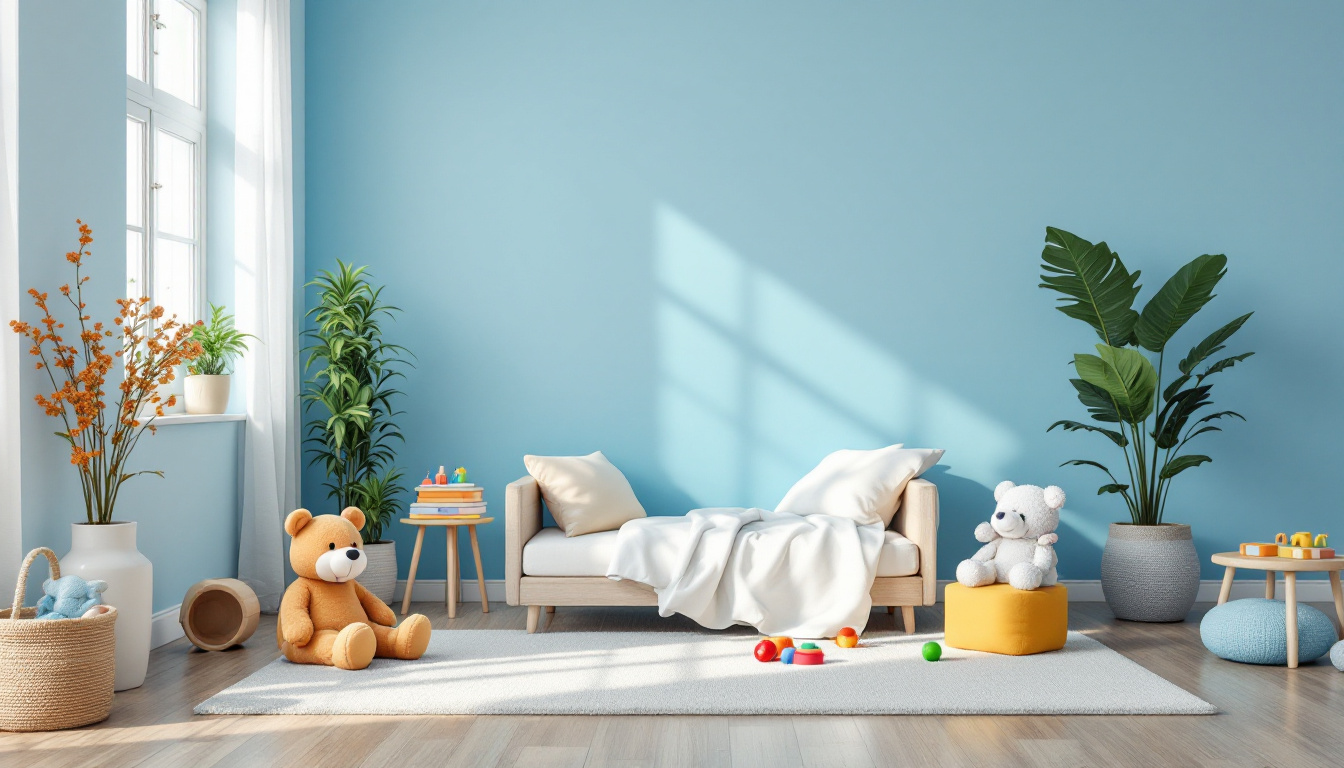Understanding Play Therapy for Autism
In the realm of autism, play therapy emerges as a notable therapeutic approach that harnesses the power of play for enhancing communication, expression, and emotional well-being in individuals with autism. This section delves into the fundamental aspects of play therapy, encompassing its definition, purpose, and the significant benefits it offers to children with autism spectrum disorder (ASD).
Definition and Purpose
Play therapy is a specialized form of therapy that leverages play activities as a mode of communication and expression. Within the context of autism, play therapy creates a safe and nurturing environment where children are encouraged to engage in play-based interactions to foster both verbal and non-verbal communication. By utilizing play as a medium for therapeutic intervention, play therapists facilitate the development of crucial skills and behaviors in children on the autism spectrum.
Benefits of Play Therapy
The efficacy of play therapy in the realm of autism is profound, offering a myriad of benefits that can significantly impact the lives of individuals with ASD. Through play therapy, children with autism can achieve remarkable advancements in various crucial areas:
- Communication Enhancement: Play therapy provides a conducive space for children to express themselves through play, leading to improvements in language acquisition, vocabulary expansion, and effective self-expression [1].
- Social Skills Development: Structured play activities within play therapy enable children with autism to engage in social interactions, fostering skills such as turn-taking, sharing, and understanding social boundaries [1].
- Emotional Regulation: By creating a safe environment for exploring and expressing emotions through play, children learn essential coping strategies, problem-solving skills, and self-regulation techniques, contributing to improved emotional well-being and resilience.
The holistic approach of play therapy not only addresses the core challenges faced by individuals with autism but also cultivates a nurturing environment that facilitates growth and development. By incorporating play as a therapeutic tool, play therapy embodies a profound and impactful intervention that empowers children on the autism spectrum to navigate and thrive in their unique journey of personal development and self-discovery.
Key Aspects of Play Therapy
Exploring the key aspects of play therapy for children with autism sheds light on the significant benefits it offers in enhancing communication, fostering social skills development, and promoting emotional regulation.
Communication Enhancement
Play therapy for children with autism plays a vital role in enhancing communication skills by providing a safe and interactive environment for verbal and non-verbal expression. This therapeutic approach facilitates language acquisition, vocabulary expansion, and effective self-expression. Through structured play activities and guided interactions, children can develop their communication abilities and find new ways to express themselves.
Social Skills Development
Another critical aspect of play therapy is its focus on fostering social skills development in children with autism. By engaging in structured play activities, group play, and cooperative games, children are provided with opportunities to practice social engagement, turn-taking, sharing, and understanding social boundaries. These activities promote social interaction, empathy, and collaboration, helping children with autism navigate social situations more effectively.
Emotional Regulation
Emotional regulation is a key component of play therapy for children with autism, as it allows them to explore and process their emotions in a safe and supportive environment. Through sensory play, pretend play, and other therapeutic techniques, children can develop strategies to manage their emotions effectively and gain a deeper understanding of their experiences [1]. By actively engaging in play-based interventions, children learn to identify and express their emotions, cope with challenges, and build resilience in navigating their emotional world.
By emphasizing communication enhancement, social skills development, and emotional regulation, play therapy offers a holistic approach to supporting children with autism in their development. Through structured play sessions and tailored interventions, children can experience meaningful improvements in their communication abilities, social interactions, and emotional well-being. This evidence-based intervention positively impacts the lives of children with Autism Spectrum Disorder, enhancing their relationships with family and peers [2].
The Impact of Play Therapy
In the realm of play therapy for autism, the impact is profound, particularly on cognitive function and challenging behaviors management. Play therapy serves as a pivotal intervention that fosters various developmental aspects in children on the autism spectrum, enabling them to express themselves, establish relationships, and acquire essential life skills.
Cognitive Function
Engaging in play therapy has shown to significantly enhance cognitive function in children with autism. By providing a structured and interactive environment, play therapy promotes cognitive development by stimulating problem-solving skills, spatial awareness, and logical thinking processes. Through play activities tailored to individual needs, children are encouraged to explore, learn, and practice cognitive skills in a non-judgmental setting.
The nurturing and supportive nature of play therapy allows children to build confidence in their cognitive abilities, leading to improvements in memory, attention span, and overall cognitive flexibility. As highlighted by Total Care ABA, play therapy helps children with autism develop coping strategies and manage emotions effectively, thereby positively impacting their cognitive growth.
Challenging Behaviors Management
Another significant impact of play therapy for autism is the effective management of challenging behaviors. Through structured play activities and guided interactions, children learn to regulate their emotions, communicate their needs, and navigate social situations more adeptly. By providing a safe space for exploration and expression, play therapy equips children with the tools to address challenging behaviors in a proactive and constructive manner.
Play therapy interventions play a vital role in helping children with autism develop coping mechanisms and social skills, paving the way for healthier interactions with peers and family members. As noted by Yellow Bus ABA Center, play therapy contributes to enhancing communication, fostering social interactions, and effectively managing challenging behaviors in children with autism.
The impact of play therapy extends beyond cognitive function and challenging behaviors management, encompassing various domains of development crucial for the well-being and progress of children on the autism spectrum. Through guided play sessions and tailored approaches, play therapy nurtures the cognitive, emotional, and social growth of children with autism, fostering a holistic pathway towards improved quality of life.
Methods in Play Therapy for Autism
Exploring the different methods utilized in play therapy for autism provides insight into the diverse approaches that can be tailored to suit individual needs. Two commonly used methods in play therapy for autism are the Floortime method and sensory-based play therapy.
Floortime Method
The Floortime method, as highlighted by Yellow Bus ABA Center, involves parents actively engaging in child-led play sessions with their child. This approach aims to foster interaction, encourage reciprocal communication, and promote emotional bonding. By following the child's lead and engaging in their interests, parents can help enhance their child's social skills and emotional development.
The core principle of the Floortime method is to meet the child at their current developmental level and gradually expand their skills through play-based interactions. This method emphasizes the importance of engaging children in meaningful and enjoyable activities that support their social and emotional growth.
Sensory-Based Play Therapy
Sensory-based play therapy utilizes sensory toys and activities designed to stimulate a child's senses and promote exploration and engagement. By engaging the senses, such as touch, sight, sound, and movement, sensory-based play therapy aims to enhance sensory processing, improve focus and attention, and regulate emotions.
This approach, as mentioned by Yellow Bus ABA Center, provides children with autism opportunities to explore different textures, sounds, and movements in a controlled and therapeutic environment. Sensory-based play therapy can help children with autism develop sensory integration skills, improve their self-regulation, and enhance their overall sensory experiences.
By incorporating the Floortime method and sensory-based play therapy into play therapy sessions for children with autism, therapists and parents can create a holistic and individualized approach that targets key areas of development. These methods offer valuable tools to support communication enhancement, social skills development, and emotional regulation in children with autism, enriching their overall therapeutic experience.
Customized Approach to Play Therapy
When it comes to play therapy for autism, a one-size-fits-all approach is not effective. Each child with autism has unique needs and challenges that require a personalized treatment plan. Play therapy takes this into account through a customized approach that tailors activities and tools to the individual needs of the child, fostering a secure environment for development and growth.
Tailoring to Individual Needs
Play therapy for autism emphasizes the importance of tailoring interventions to align with each child's specific strengths and challenges. By understanding the child's preferences, sensitivities, and development level, therapists can create a tailored plan that caters to their individual needs. This personalized approach helps create a safe and supportive environment that encourages engagement and progress.
Structured Activities and Tools
In play therapy for autism, structured activities and tools play a crucial role in promoting development and learning in a fun and engaging manner. These activities are designed to target specific skills, such as communication, social interaction, and emotional regulation, while also accommodating the child's unique characteristics and interests.
Utilizing a variety of toys, games, and tools, therapists can create a stimulating environment that encourages exploration and self-expression. Through these structured activities, children with autism can enhance their cognitive abilities, improve their social skills, and develop emotional regulation strategies in a supportive setting.
By embracing a customized approach in play therapy for autism, therapists can address the individual needs of each child, allowing them to express themselves, process emotions, and gain a deeper understanding of their experiences. This personalized therapy enables children to actively explore their inner world, develop coping strategies, and build resilience as they navigate their developmental journey.
For more information on play therapy for autism and its benefits, you can refer to Yellow Bus ABA Center and Total Care ABA.Tailoring the therapy to the child's unique strengths and challenges ensures a holistic and effective approach to supporting children with autism through play therapy.
Play Therapy Stages
When engaging in play therapy for autism, it's essential to understand the various stages that typically unfold throughout the therapeutic process. These stages provide a structured framework for therapists to guide children with autism towards positive outcomes. The primary therapy stages include the initiation phase, resistance phase, actual work phase, and termination phase.
Initiation Phase
The initiation phase marks the beginning of the therapeutic journey. During this phase, the therapist conducts an initial interview with the family and the child, conducting a preliminary treatment assessment. This crucial stage sets the foundation for the therapeutic relationship and allows the therapist to gain insight into the child's unique needs and challenges.
Resistance Phase
As therapy progresses, it is common for children with autism to exhibit resistance to change or engage in challenging behaviors. The resistance phase is characterized by the child's reluctance to participate fully in the therapeutic activities. During this phase, the therapist works collaboratively with the child to address any barriers to engagement and build trust and rapport.
Actual Work Phase
The actual work phase represents the core of the play therapy process. In this phase, the therapist and the child actively engage in therapeutic activities designed to target specific goals and objectives. Through play-based interventions, the child has the opportunity to practice communication, social, and emotional skills in a supportive and nurturing environment.
Termination Phase
The termination phase signifies the conclusion of the formal therapy sessions. As the therapeutic goals are approached or achieved, the therapist and the child work together to reflect on the progress made during the therapy sessions. This phase focuses on transitioning the child back to their daily routines while equipping them with the skills and strategies learned throughout the therapy process.
The play therapy stages in play therapy for autism play a vital role in shaping the therapeutic experience and promoting positive outcomes for children with autism. By navigating through each stage thoughtfully and intentionally, therapists can create a supportive and empowering environment that encourages growth, development, and improved well-being for children on the autism spectrum.
Play Therapy Research Findings
When it comes to understanding the impact of play therapy for autism, research findings provide valuable insights into its effectiveness and the specific benefits it entails. This section focuses on the outcomes of various studies that have explored the effectiveness of play therapy and its impact on social skills in individuals with autism spectrum disorders (ASD).
Effectiveness Studies
Numerous studies have highlighted the efficacy of play therapy in improving various aspects of behavior and communication in individuals with autism. For example:
- Shelter House Play Therapy demonstrated a positive impact on social responsiveness and social communication in children with autism, as evidenced by a significant difference between pre and post-test results in an experimental study with 12 respondents diagnosed with ASD.
- Learn to Play Therapy, involving parent-child sessions, led to a notable increase in the child's pretend play ability and social interaction in a group of six children diagnosed with autism spectrum disorder.
These findings underscore the value of play therapy as a beneficial intervention for children with autism, supporting their social and communicative development through engaging and interactive therapeutic approaches.
Impact on Social Skills
Improving social skills is a key objective in the treatment of individuals with autism spectrum disorders. Play therapy has shown promising results in enhancing social skills among children with ASD, as indicated by the following research outcomes:
- Play-based empathy training, utilizing image cards and social stories, significantly enhanced social skills in students with autism spectrum disorders. Notably, children aged 5 to 6 years old demonstrated noticeable improvements in their social interactions and communication skills.
- Child-Centered Play Therapy sessions yielded positive results by decreasing core symptoms and behavioral issues, such as externalizing problems, attention deficits, and aggression, in children with ASD aged 4 to 10 years old.
These research findings emphasize the role of play therapy in fostering the development of essential social skills and behaviors in individuals with autism. By providing a supportive and interactive environment, play therapy interventions help children with ASD improve their communication, social interactions, and emotional regulation, contributing to their overall well-being and quality of life.
Neuroplasticity in Play Therapy
Exploring the profound impact of play therapy on individuals with autism goes beyond behavioral improvements; it delves into the realm of neuroplasticity, influencing the brain's ability to adapt and rewire neural circuits for enhanced functioning.
Forming New Neural Circuits
Engaging in play therapy induces neuroplasticity in children with autism, as highlighted by studies [3]. Through interactive and repetitive play activities, new neural circuits are formed, fostering the integration of emotional and creative functions of the right brain with logical and analytical functions of the left brain. This new network of connections aids in synaptic development, enhancing cognitive and emotional processes.
Promoting Brain Plasticity
Play therapy, through its multifaceted approach involving empathic harmony, emotional provocation, and affect-and-cognition integration, promotes brain plasticity in individuals with autism. By co-constructing nonverbal narratives and engaging in creative play sessions, the therapy encourages the development of new neural circuits. This process of neuroplasticity not only enhances cognitive functions but also supports emotional regulation and social interactions, contributing to holistic growth and development in individuals with autism.
The incorporation of play therapy in interventions for autism not only addresses behavioral challenges but also harnesses the brain's inherent ability to adapt and reorganize, leading to significant improvements in cognitive, emotional, and social domains. The formation of new neural circuits and promotion of brain plasticity offer promising avenues for enhancing the quality of life and overall well-being of individuals on the autism spectrum.





